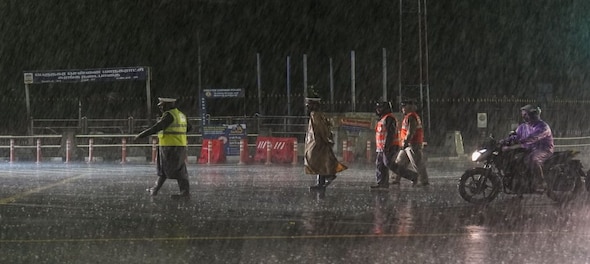
A significant 55% of tehsils or sub-districts across the country have recorded an over 10% increase in the southwest monsoon rainfall in the last decade spanning from 2012 to 2022 due to climate change, according to a new study released on January 17.
Independent think-tank 'The Council on Energy, Environment and Water (CEEW)', which analysed 40-year rainfall data for more than 4,500 tehsils across India, also found that 11% of the sub-districts saw a reduction in the southwest monsoon rainfall in the last decade.
The tehsils that recorded deficient rain are located in the rain-fed Indo-Gangetic plains, northeast India and the upper Himalayan region. These areas are crucial for India's agricultural output and contain fragile ecosystems particularly vulnerable to extreme climate events.
Of these tehsils, around 68% experienced rainfall reduction in all months from June to September, while 87% showed a decline during the initial monsoon months of June and July, which are crucial for the sowing of kharif crops.
Nearly a quarter of the tehsils studied in traditionally drier regions such as Rajasthan, Gujarat, central Maharashtra, and parts of Tamil Nadu saw a pronounced rainfall increase of over 30% during the June to September period.
The researchers said 48% tehsils in India saw a more than 10% increase in rainfall in October, which could be due to the delayed withdrawal of the southwest monsoon from the subcontinent.
The study titled "Decoding India's Changing Monsoon Patterns" attributes the shift in rainfall patterns to the accelerating rate of climate change. It also found that the increased precipitation in these tehsils is the result of frequent short-duration, heavy rainfall events which often lead to flash floods.
For instance, 31 per cent of the tehsils experienced an increase of four or more days of heavy rainfall per year in the last decade (compared to the previous 30 years) during the southwest monsoon.
The monsoons are critical for India's agricultural landscape, with 52% of the net cultivated area relying on it. It is also crucial for the replenishing of reservoirs critical for drinking water apart from power generation across the country.
Vishwas Chitale, senior programme lead at CEEW, said, "The monsoons impact the food we eat, the water we drink and also our energy transition. CEEW's study not only maps monsoon variability — both southwest and northeast — over the past 40 years across India but also provides openly accessible tehsil-level rainfall information for decision-makers to assess risks at the local level.
"With increasing extreme weather events, hyper-local climate risk assessments and action plans are the way to go for India to keep leading in climate action and disaster risk reduction. This will help save lives, livelihoods and infrastructure," he said.
The study also found that the increase in rainfall is not well distributed throughout the seasons and months.
Out of the total tehsils that saw a decrease in southwest monsoon, 87% of them, located in states such as Bihar, Uttarakhand, Assam, and Meghalaya, saw a decline in rainfall during the initial monsoon months of June and July, which are crucial for sowing kharif crops.
On the other hand, 48% of tehsils in India saw an increase in October rainfall by more than 10%, which could be due to the delayed withdrawal of the southwest monsoon from the subcontinent.
This has direct implications for the sowing of rabi crops during this time.
The study also shows changing patterns in the northeast monsoon — from October to December — which is particularly crucial for peninsular India.
The northeast monsoon rainfall has increased by more than 10% in the last decade in around 80% of tehsils in Tamil Nadu, 44% in Telangana, and 39% in Andhra Pradesh.
Odisha and West Bengal on the East Coast and Maharashtra and Goa on the West Coast have seen an increase in rainfall during this period.
Check out our in-depth Market Coverage, Business News & get real-time Stock Market Updates on CNBC-TV18. Also, Watch our channels CNBC-TV18, CNBC Awaaz and CNBC Bajar Live on-the-go!


Prajwal Revanna Sexual Assault Case: Activist raises concerns over political interference, delayed investigation in the matter
Apr 30, 2024 10:17 PM
Lok Sabha Election 2024: Baramati election outcome will decide the future of Pawar dynasty, says expert
Apr 30, 2024 10:08 PM
Lok Sabha elections 2024: Baramati to Mainpuri, key battles in phase 3
Apr 30, 2024 7:01 PM

